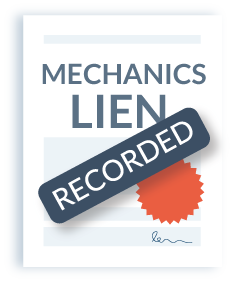
Mechanics lien amendments serve to correct, modify, or add information to a previously recorded lien. Very few states have concrete statutory rules when it comes to the applicability or availability of amendments, or the process of modifying a previously recorded lien. This can make the process all the more confusing for the construction industry. However, in some cases, an amendment may be the prudent option to rectify a recorded lien with missing or incorrect information.
 Can a mechanics lien be amended?
Can a mechanics lien be amended?
Like many questions related to mechanic’s liens and preliminary notices, the answer to whether a mechanic’s lien claim may be modified is “it depends”on several different factors.
A major factor is whether or not the original timeframe for filing a lien has expired. Generally, if an amendment is a potential solution, it must be filed before the original deadline by which a valid lien must be filed has expired. However, as mentioned above, very few states provide specific guidelines and requirements regarding lien amendments.
Colorado is one of the few states that explicitly mentions lien amendments in the statutory mechanics lien law, and specifically states a lien may be amended within the original lien filing period. However, even in states where this is not specifically stated, it is generally imperative to file any lien amendment within the time in which a valid lien could be originally filed. The failure to do so could trigger a determination that the lien was filed outside the deadline, and result in an invalid lien. It is also important to note that an amendment will not have any effect on an already expired lien, nor will a lien amendment extend the life of a lien.
Clearly, the best practice is to make sure all the information on the lien is correct before the lien is first recorded and avoid this question altogether. But, if that didn’t happen for whatever reason, a lien modification may be possible.
What information is needed for a lien amendment?
Filing a lien amendment is analogous to preparing and submitting a mechanics lien, or a lien release. The document must be prepared with the corrected information, and reference the originally recorded lien with the proper data. A good practice is to state directly on the corrected lien that the document is an amendment, and include the reference information (book, page, instrument number, and recording date) of the previously filed lien.
Because this information is relevant to the clerk or recorder receiving the lien, it is a good practice to clearly state this information at the top of the first page, where the clerk or recorder will notice it. The pre-recorded amended lien should be treated much like a new lien in terms of the process – the margins, fees, and other particular county requirements must be met, and enough time must be given for the county to properly and fully process and register the lien amendment. If state statute states the lien must be served, it is a good practice to serve the amendment as well.
Reasons for amending a lien claim
Amending a lien to a larger amount
The first step is determining whether or not the time during which an original lien could be filed has passed. Many states allow a lien to be modified only if the time period to file an original lien has not elapsed. That is, if the deadline for a party in your position relative to the construction project to file a lien has passed, your lien modification will not be effective.
Further, modifying a lien after the appropriate date may result in the entire lien being rendered invalid – not just the modified amount. In states without specific statutes related to the modification of mechanic’s liens the same general restriction would likely apply. In such a situation, to modify the lien, the lien claimant would need to release the original lien and file a new lien with the correct information. Clearly, this could not be accomplished if the time for filing a lien had run out.
If the time period in which the original lien could be filed has elapsed, it is generally not safe to attempt to modify the lien as it can result in the entire lien’s invalidation. In this case, it is likely that you performed work pursuant to more than one construction contract. If that is the case, the amount you wish to be added to the original lien may be able to be the basis for a new lien entirely. For example:
- Work was done and unpaid,
- Lien was filed,
- Time passed in which a lien could have been filed for the work,
- A claimant does more work on the property pursuant to a new contract and is again unpaid,
- A new lien for the second work may be filed. While one may question the wisdom of the claimant in the above example (going back to do more work when he is still unpaid under the first contract and a lien has been filed) this may be the process to use if the lien cannot be modified, and the claimant has done more work.
If the lien needs to be modified only because of a miscalculation or oversight in the preparation of the lien, i.e., no more work occurred, and the time period has expired, the lien claimant may be out of luck.
Amending a lien to a smaller amount
If you have been paid some amount of your claim, or have realized that your claim amount is incorrect and want to modify the lien to reflect the proper amount, you may wish to amend the lien to note the smaller claim amount. This, in general, may not be a good idea. While it may accomplish the objective if the timing is right, the same problems noted above also apply here. If the period in which a lien may be originally filed has passed, the modification or amendment may invalidate the entire lien. If you have only been paid a portion of the amount due, it makes little sense to risk invalidating the lien securing the rest.
Fortunately, it may be possible to work around this problem. A partial lien release may be effective in accomplishing the same result, without the risk of losing the lien’s security on the remaining amount due. By filing a partial lien release, only that amount is released from the lien – and if the filing is not effective, it doesn’t affect the previously filed lien itself.
Amending a lien for other reasons (i.e., in response to challenge)
If the lien was correct in the claimed amount due, but it was challenged due to a common lien mistake, such as an incorrect property owner or legal description of the property, the first thought of many lien claimants is to modify the lien to reflect the proper information by filing an amendment. The same cautions apply here. While whether the lien will be invalidated for whatever reason, it was challenged is a question that can only be answered on a case-by-case basis, an attempt to amend the lien may be fatal.
Alternatives to mechanics lien amendments
One potential alternative route to recording a lien amendment, (when the time to file a lien has still not passed) is to release the incorrect lien and file a completely new mechanics lien with the correct information. This can be tricky, however, as deadlines can come quickly and potential recording delays could result in the loss of all lien rights.
- For more see: Can I Refile a Mechanics Lien After I Remove the Lien?
Since lien amendments are confusing, and the rules surrounding them are often difficult to determine, it is always a good idea to seek legal advice from an attorney to figure out the best course of action in any particular case. Lien amendments are an interesting but confusing area of construction law. Clearly, the best-case scenario is for a mechanics lien to contain correct information from the start, so that a lien amendment isn’t required – but sometimes that’s hard to accomplish.


 Can a mechanics lien be amended?
Can a mechanics lien be amended?
